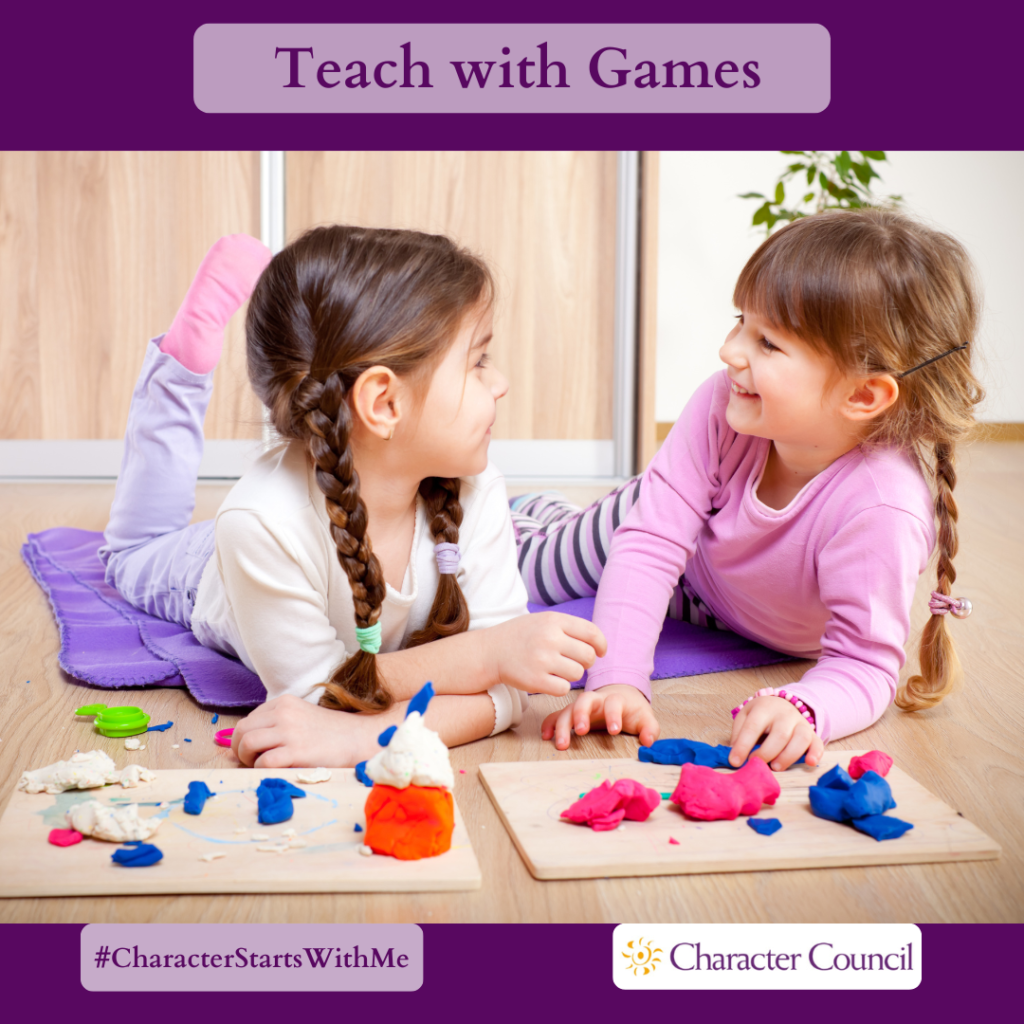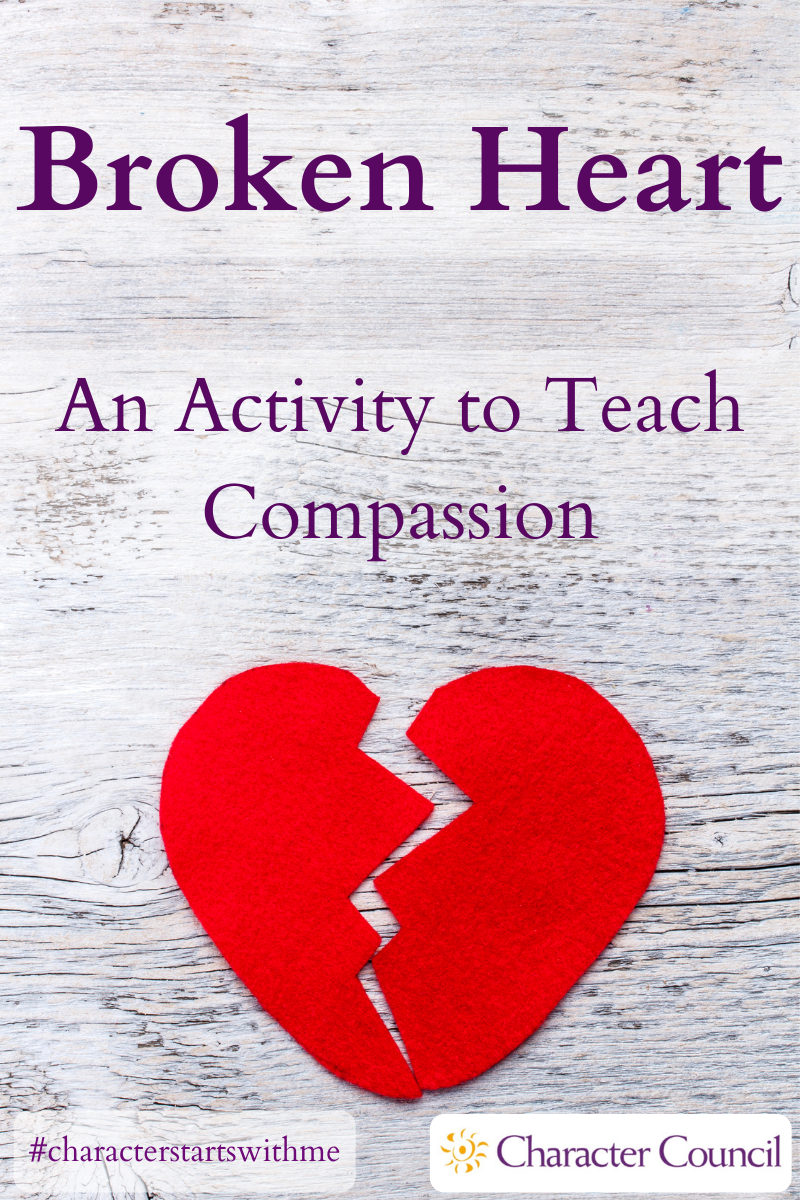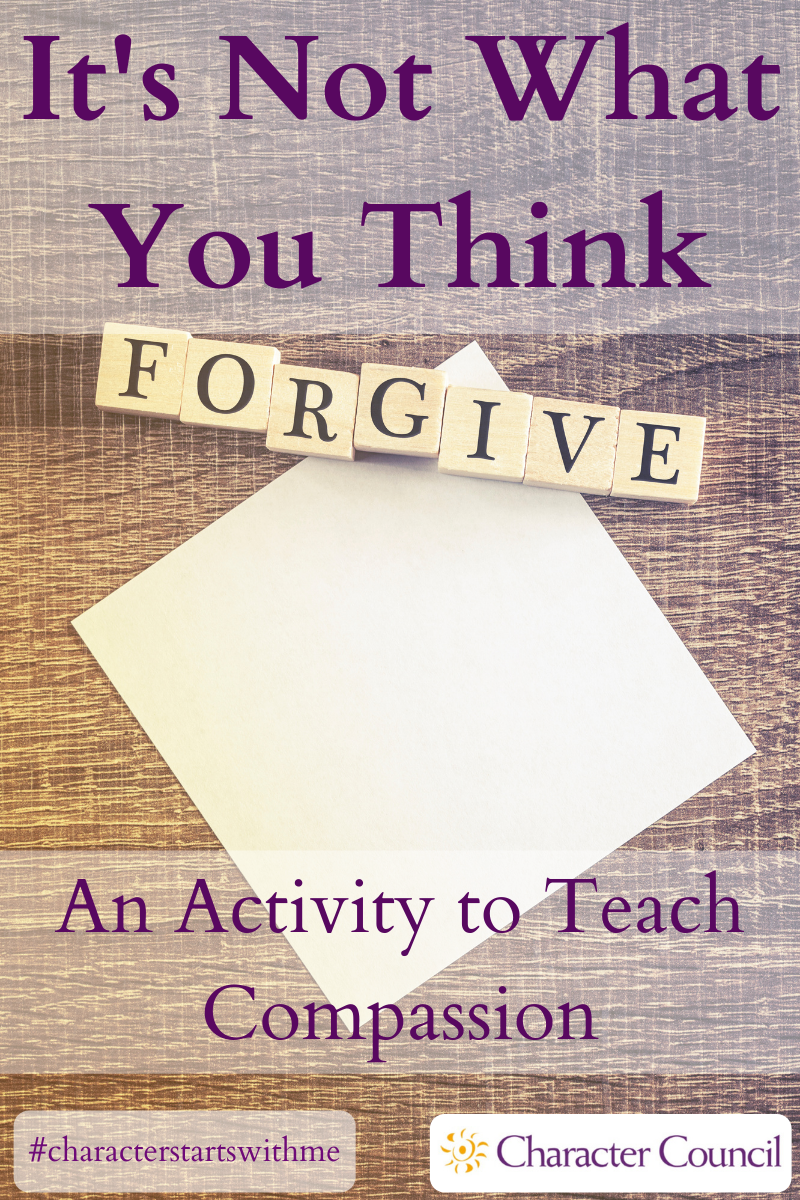
Compassion Activities
The activities here are fun ways to teach character. The game aspect makes the lesson more memorable. Each activity has processing questions at the end. Without processing the activity, the exercise is just a game. To make it a stronger lesson when you process it, relate the character quality to a core value that your organization promotes.
Consider picking a student to run the activity. You will need to give them time ahead of the activity to prepare. Another option is to pick a few students to run the activity for a younger classroom after you have run it for your class. Encourage your students to repeat it in the home for younger siblings or even parents.


Where Does It Hurt?
The concept of compassion is a focus on healing the hurts of others. This activity will simply show the ways that individuals can be hurting and the ways that we can help. You will need Band-Aids and either flower or smiley stickers, enough so that each student has one Band-Aid and several smiley stickers. Begin a discussion of the definition of Compassion. Discuss the two ways that people can be hurting – physically and emotionally. Physical hurts include bodily injuries as well as those who suffer without food or clean water. Emotional hurts are those we feel in our hearts. Be sure to focus the discussion on the types of hurts that students can cause each other such as being excluded (emotional bullying) or being pushed around and called names (physical bullying). Distribute the Band-Aids to each student and instruct them to wear it someplace visible on their hand or arm so that all are reminded of the types of hurts there are. They can put them on skin or clothing. Next, pass out several smiley stickers (any positive/happy sticker will do) so that each student has several. Next, you will call upon the students to heal each other’s hurts by placing smiley stickers on each other’s Band-Aids. First, have everyone put a smiley sticker on the Band-Aid of the person to their left. Then instruct everyone to heal the person to their right. Do the same for the person in front of and behind each of them. Use directions that are appropriate for how the desks are arranged. If Covid restrictions prohibit this type of sharing, then have each student hold up a pen or pencil and ceremoniously convert these to magic compassion wands. Go through the same exercise with them magically healing each other. You can have each person put their own smiley sticker on afterward or they can draw a smiley face on their own band-aid. Once the exercise is done, start a discussion on how you can tell someone is hurting. Ask the class for examples of how you can show compassion to someone when you think they are hurting.
To process the activity, ask these or similar questions:
- Did it feel strange to put a band-aid over something that wasn’t injured?
- How did it feel to have someone heal ‘your hurt’?
- How did it feel to heal someone else’s ‘hurt’?
- Do you think you will be more alert to looking for ways people may need to be helped when they are hurting?

Broken Heart
To prepare for this activity, find or create a simple picture of a large heart. Cut the heart into small pieces so that there is one piece for each student. You may get as creative in cutting apart the heart as you wish; just make sure that the students will be able to re-assemble the heart. As you begin this activity, remind the students of the discussion about the types of hurts. Distribute a piece of the heart to each student. Have each student write their name on the piece they receive. Now challenge the students to heal this broken heart by re-constructing the pieces. To make it easier, you may want to have the outline of the actual heart, drawn on a piece of cardboard or on a bulletin board. Drawing the lines around each piece will make it even easier especially if students can’t all work together closely. If a student is missing, save them a piece. Once the heart is together (even if it is missing a piece from an absentee), explain that as a group, the class has a heart. When any one of its members is hurting, the whole class hurts. That’s why it doesn’t make sense for students to hurt each other. When an absentee returns, be sure to let them add their piece to the heart. Leave this heart displayed in the classroom the rest of the month.
To process the activity, ask these or similar questions:
- How difficult did you think it was going to be to put the heart back together?
- Was it fun to see the shape of the heart coming together as pieces fit?
- Did you need help finding where your piece fit?
- How did it feel when your piece fit in?
- Does seeing the heart with all of the names help you feel connected to the rest of the class?
- Do you agree with the statement: when one of us is hurting, we all hurt?
- How does bullying a classmate affect the rest of the class?
- Will you remember the heart of the class, the next time you feel like saying something unkind to a classmate?

It’s Not What You Think
The purpose of this exercise is to help students understand that we each have our own way of looking at things based on our own experiences. To be compassionate towards someone else, we must look at their situations from their point of view. The first part of the exercise helps us understand our preconceived ideas that prevent us from solving the problems. For each example below, read the puzzle and ask for answers. Let them think awhile before you call for an answer. Some students may be familiar with these puzzles and you do not want a correct answer right away. Once you either get the right answer or give the answer, then ask them to identify the assumption that prevented getting the right answer right away.
Puzzle: A man and his son are in a car crash. The father is killed and the child is taken to hospital gravely injured. When he gets there, the surgeon says, ‘I can’t operate on this boy – for he is my son!!!’ How can this possibly be?
Solution: The surgeon is his mother.
Puzzle: How could a baby fall out of a twenty-story building onto the ground and live?
Solution: The baby fell out of a ground floor window.
Puzzle: A man is wearing black. Black shoes, socks, trousers, coat, gloves and ski mask. He is walking down a back street with all the street lamps off. A black car is coming towards him with its headlights off but somehow manages to stop in time. How did the driver see the man?
Solution: It was daytime.
Puzzle: A woman had two sons who were born on the same hour of the same day of the same year. But they were not twins. How could this be so?
Solution: They were 2 boys of triplets.
The next step of this lesson is to apply it to being compassionate towards others. We need to understand their pain from their point of view and seek ways to help them. Being compassionate also calls us to be understanding when bad things happen to others or when bad things happen to us as a result of someone else. Divide the students into groups of 4 – 7 students. Their assignment is to come up with scenarios where we can choose to be compassionate. Use this as an example: a student is walking fast through the halls, winding among the students all heading for class. The student bumps into you, causing you to lose your balance but you recover without falling down. You can choose to get angry or you can give them the “benefit of the doubt”. (Be sure to quiz the students to determine if they know the meaning of that phrase.) Now ask them to brainstorm ideas that could justify this person’s need to walk faster than the crowd. (Heading for the bathroom, found something in a classroom that someone forgot and they are trying to catch up to give it to them, etc.). Each group should construct a scenario like this example and come up with 1 or 2 reasons for the behavior. After each group has written their scenario, they will read it to the class and ask for ideas.
When finished, process the reading with these or similar questions:
- Were the puzzles fun to decipher?
- Was it a challenge to justify other’s behavior?
- Have you ever been in a situation where something happened to you and it looked bad but that was not the intent? Were you able to forgive easily?
- Have you ever hurt someone without meaning to? Were you forgiven easily?
- The next time something happens will you consider that there could be more than one reason for the behavior? Learning something new?